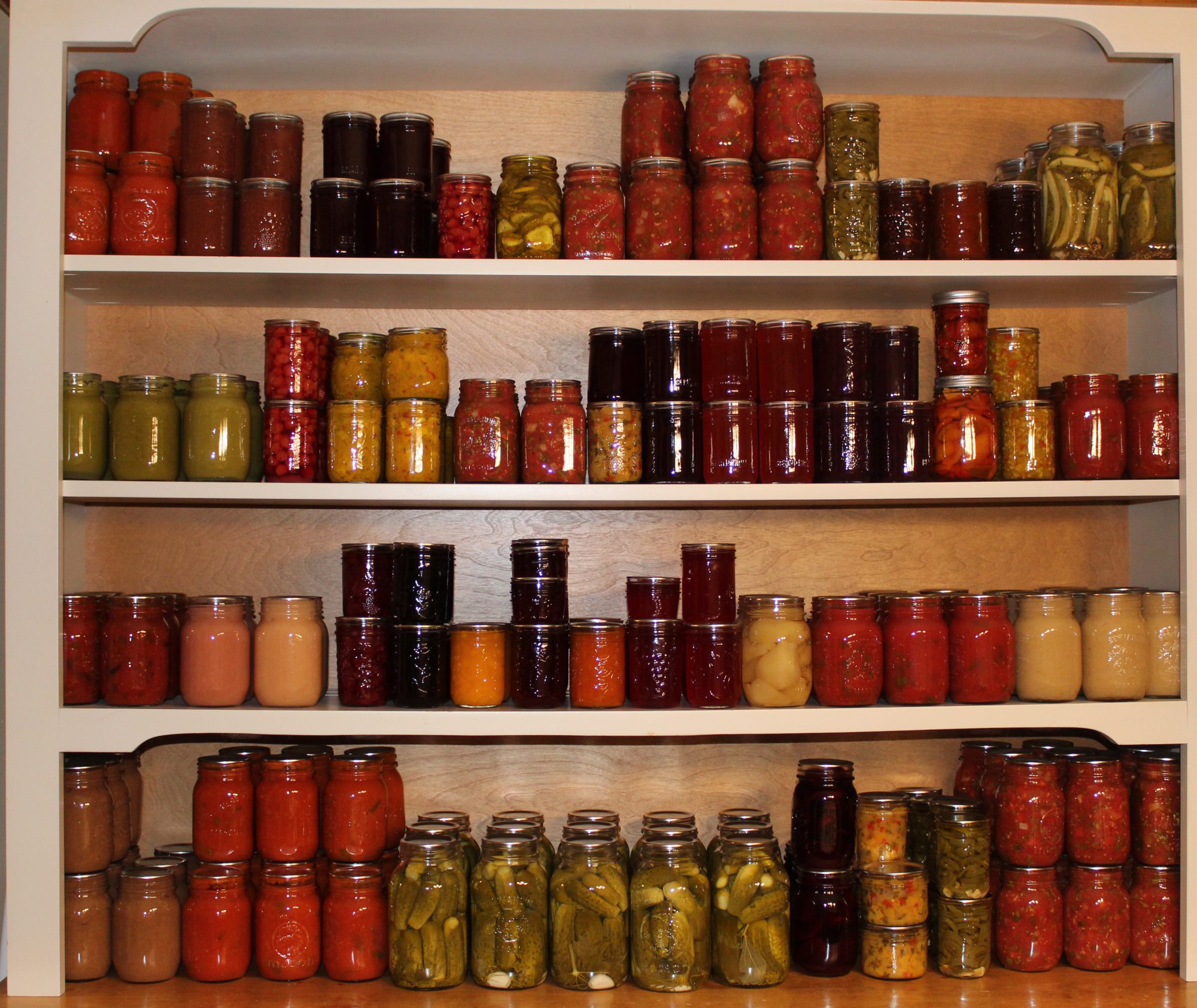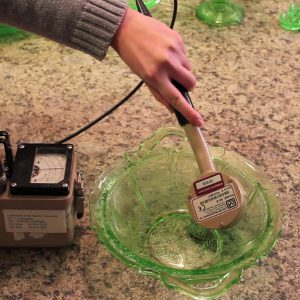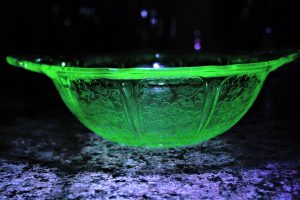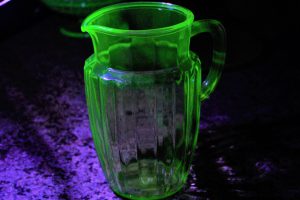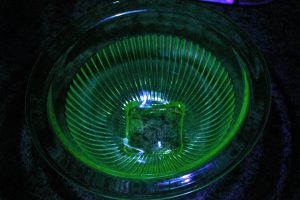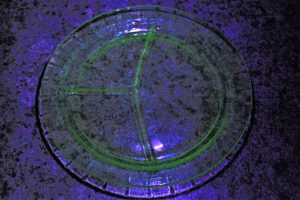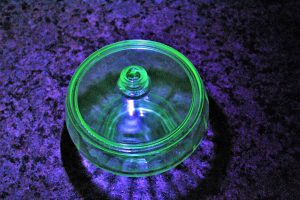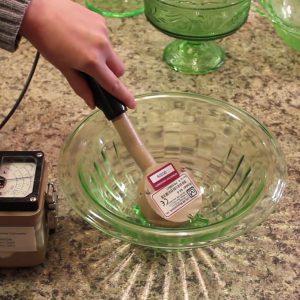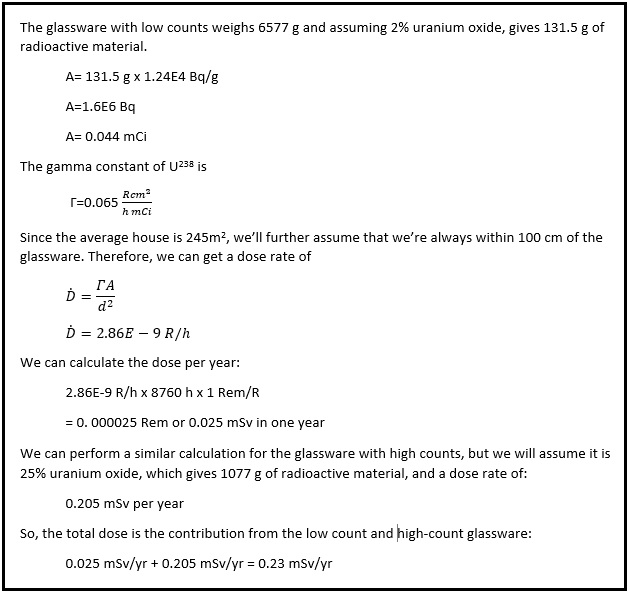
It shouldn’t surprise you that a lifetime of focusing on all things food has resulted in another passion – collecting unique dishware. While some people decorate with new pictures or interesting art, I like to decorate with dishes! Orange and rusts for the fall, red and white for Christmas, blue and white for winter, pastels and flowers for the spring and in the summer, green…. a lot of green!
Most of these dishes have come from thrift stores, auctions or antique markets, making the collection quite eclectic, colourful and interesting. Over the years, everyone in my family has developed some form of collecting, and so as a family we find these hobbies interesting and exciting.
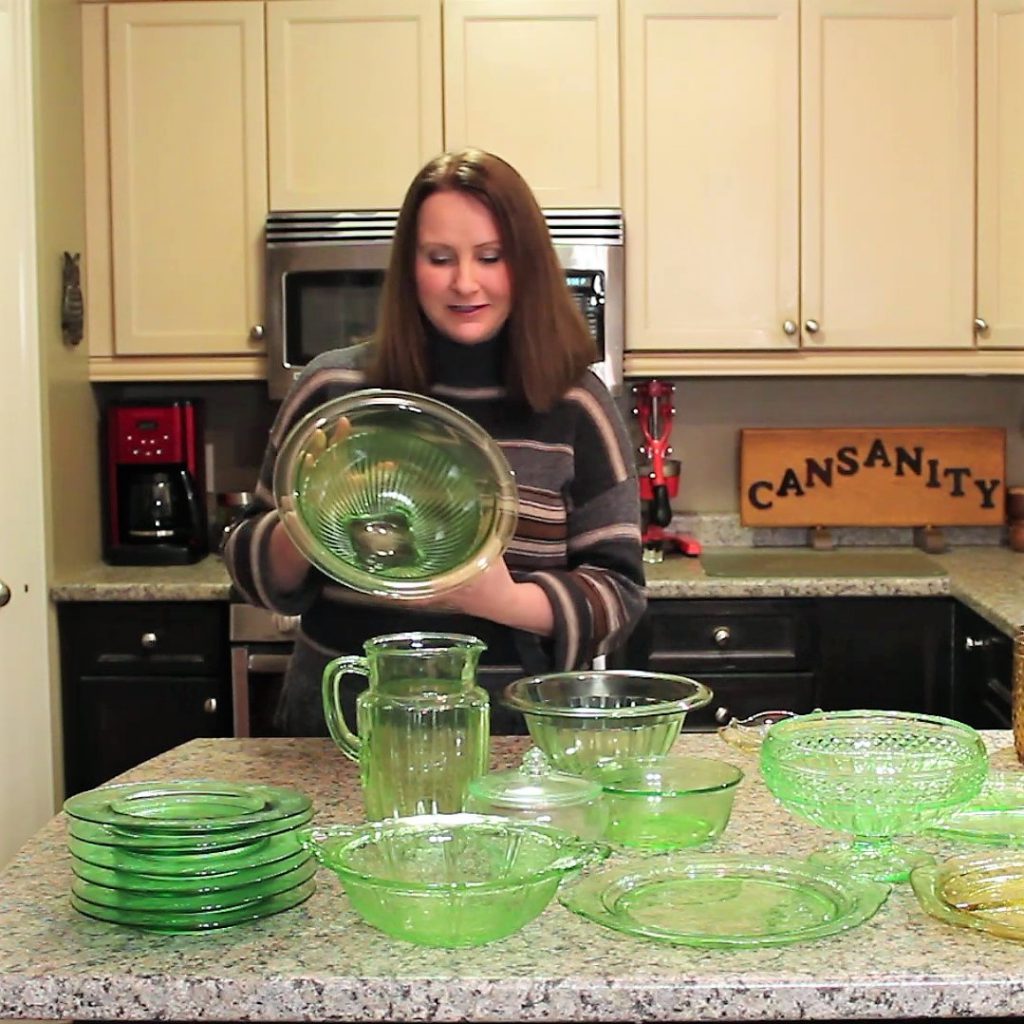
I am quite proud of my collection and the best part of collecting is that along with the antique dishes comes a story. I will have to admit that until recently, it did not occur to me that some of these dishes might be radioactive. So, this is our story!
This fall, my youngest daughter, a student of physics and math at McMaster University, was asked to do a paper and presentation on the most radiological effect in her life. She knew I had quite a collection of antique green dishes and suspected that at least some of them might contain some uranium oxide, and because of that, decided to do her paper and presentation on uranium glass.
Her findings were quite fascinating, and so I asked my daughter if she could borrow a Geiger counter from McMaster University. With a Geiger counter, we could do a YouTube video together and bring this information to you!
( Uranium Glass: How to determine if you have these radioactive dishes in your home)
In this blog, I thought I would just expand on the topic and give you some “food for thought”. First, let’s talk about the glassware itself. Why are some dishes made with uranium oxide in the first place?
Uranium oxide was first used as a colouring agent in yellow and green glass in the 1830s. The amount of uranium oxide in this glassware can vary between 2% and 25% by weight. The uranium oxide used in the glassware was pulled from natural uranium sources, meaning we can infer the exact isotope of uranium inside the glasses! Between the 1800s and 1918, regulations were loose. By 1918, the use of uranium oxide in glassware became more heavily regulated and after 1958 production in Canada and many other countries ceased all together. This wasn’t due to health concerns however! During this time, the government and scientists alike were dedicating all resources to nuclear power, research and development. While production remains stagnant in Canada, the U.S. reintroduced the practice under strict regulations. Considering this, we can estimate that the glassware that gave a higher reading on the detector likely predates World War I.
There are two ways that you can determine if you have uranium glass in your collection. You can either use a Geiger counter to measure the amount of radioactivity, or to conclusively determine that you have uranium glass, check for bright green fluorescence under UV light (i.e., with a black light). Here are some of the dishes that I have in my collection that performed well under both tests:
The four pieces above, all registered over 1000 counts per minute (cpm) on the Geiger counter and fluoresced bright green under UV light. The detector counts particles (alpha, beta and gamma) that hit the gas inside. With these counts, my daughter believes that these four pieces may have 25% pure uranium oxide in them and that they would be quite old.
The three pieces below, have lower amounts of ionizing radiation (between 400 and 900 cpm on the Geiger counter) but still fluoresced bright green:
The remaining pieces did not fluoresce very brightly, but registered between 300 and 400 cpm on the Geiger counter. They include six plates and a small bowl, and are pictured below. I did not show them pictured under a black light because they did not light up enough to be visible in the picture.
So what does that all mean? Are these dishes safe to have in my house?
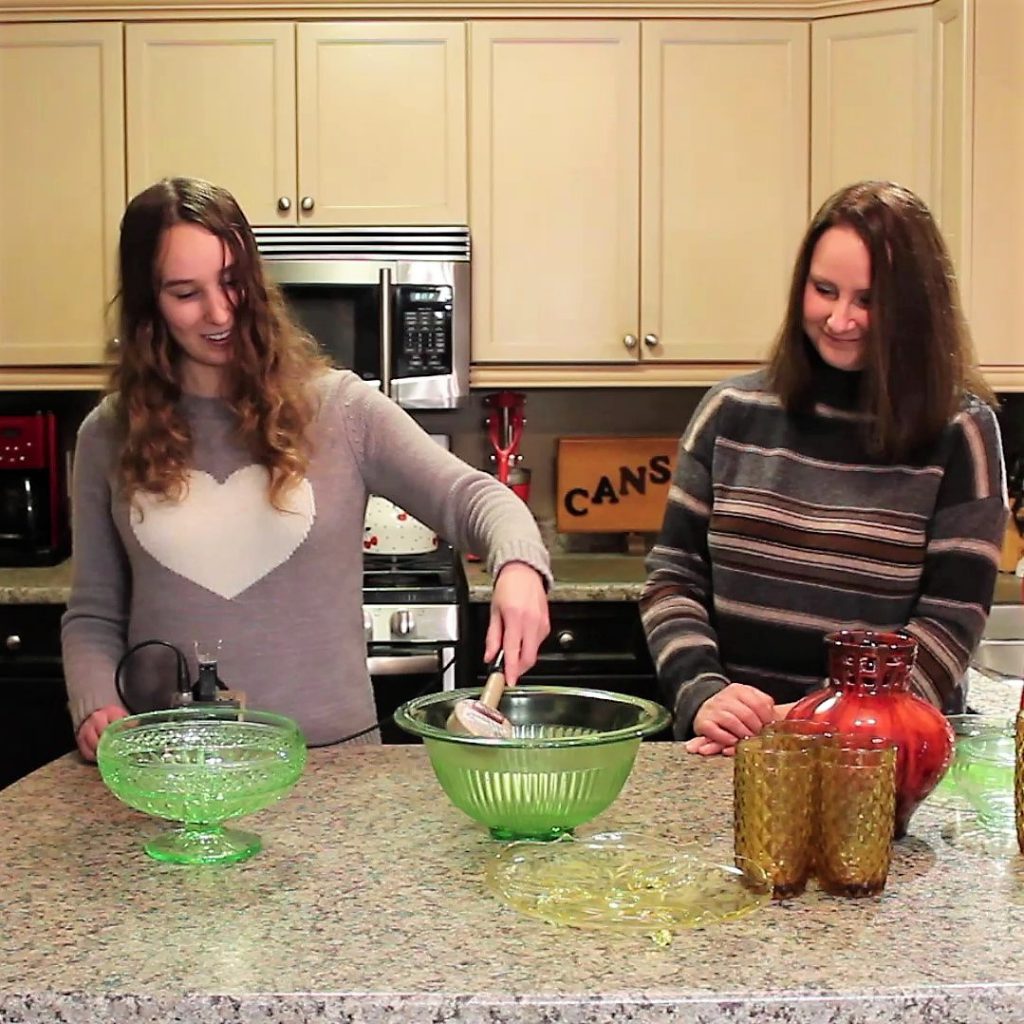
Now that we have the weight and counts per dish we made some assumptions. For the dishes with over 1000 cpm, weighing a total of 9.5 pounds, have 25% uranium oxide. And, the remaining pieces with a total weight of 14.5 pounds, dishes with under 1000 cpm, have 2 % uranium oxide.
We will also assume that we are always at a distance of 100 cm away from the glass.
With these assumptions my daughter was able to calculate the annual dose of radiation that we have received:
The total dose per year from these dishes is 0.23 mSv/year. This is equivalent to two chest x-rays or six coast-to-coast flights across North America in one year.
This is a pretty small dose. The International Commission on Radiological Protection (ICRP) effective dose limit for the public is 20mSv per year. Anyone exposed to the glass will not experience any ill effects. Under these assumptions, the glass is well within regulations and perfectly safe to have in my house.
I wanted to focus this blog content on the vintage green dishes in my collection, but you should know that uranium oxide can also be found in yellow dishes that are commonly referred to as “Vaseline glass”.
Also, custard glass that has a slight tinted green tint in regular light may also contain uranium oxide. It is important to note that true uranium glass will fluoresce bright green under UV light. So, if you find glassware that fluoresces a bright colour but the colour is not bright green then it is not uranium glass, or if any of your dishes register radioactivity with a Geiger counter but do not fluoresce bright green under UV light, it is not true uranium glass.
The practice of using uranium oxide in glassware does still take place. However, the pieces are ornamental or novelty pieces, not dinnerware. These modern pieces come in a range of colours, including blue, and fluoresce green under UV light.
Such fun to find out something new about my dish collection, and such an interesting activity to do with my daughter this Christmas! I would love to spend more time researching this topic of uranium glass and all the ways that uranium oxide was and is used in glassware before publishing this blog but that may take some time. So instead, here is the first blog on uranium glassware! I hope I have piqued your interest, and if you find any dishware in your collection that glows, let me know and join me in “Glowing” into the New Year!

